Table of Contents
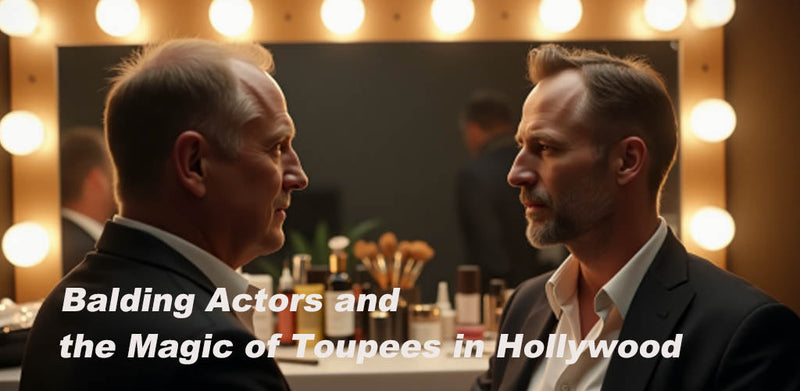
Men start losing hair much earlier than expected. Many American males notice their hair thinning by age 21. Hollywood's balding actors face extra pressure about this issue since they need to look their best on camera. The world of famous bald people in entertainment is more complex than it might seem at first glance.
Hair systems have changed the entertainment industry significantly in the last three to five years. While Rogaine and Propecia offer treatment options for male pattern baldness, many bald celebrities prefer toupees because they work right away and look real. Tennis star Andre Agassi helped normalize male hair systems when he shared his experience wearing a hairpiece during his career. Modern toupees look nowhere near the obvious fake hair from the 70s and 80s - they blend in perfectly with natural hair, creating iconic looks for many stars.
Let's delve into how Hollywood stars deal with hair loss. We'll examine the latest toupee technology and the reasons some bald celebrities male choose hairpieces while others rock their natural balding look or opt for a shaved head.
Famous Balding actors Who Wear Toupees

Hollywood's biggest stars have turned to toupees to keep their on-screen image intact. Take James Stewart, a beloved star from Hollywood's golden age who skillfully hid his hairpieces throughout his career. Ray Milland, another heartthrob from that era, started wearing studio-crafted toupees in the 1940s to stay in leading roles.
Matthew McConaughey's story stands out among today's bald head actors. His looks changed dramatically after he dealt with major hair loss in the 1990s. He got hair systems that became his signature style. Brad Pitt made news when paparazzi caught his thinning hair at a red-carpet event. He quickly brought back his famous blonde hair with advanced hair systems.
Charlie Sheen uses frontal hairpieces to hide his receding hairline and bald spots during his public appearances and roles. Al Pacino's remarkable career shows how versatile hair systems can be. His hairstyles and colors change significantly between roles, demonstrating the range of celebrity hairstyles possible with toupees.
Robert Pattinson's brown locks in Twilight won millions of hearts. He later shared that he wore a hairpiece during Breaking Dawn Part 2 reshoots. This honest approach helped others accept toupees in Hollywood. Jon Cryer also speaks openly about his hair situation. He credits "several talented professionals making the most of, like, four hairs".
John Travolta's relationship with hair systems tells an interesting story. Years of speculation ended when he embraced his natural look but acknowledged using lace front wigs for events and movies. Kevin Costner started using hair systems early in his career to cover thinning hair during films and events.
James Bond movies show how toupees became part of the franchise. Sean Connery wore one throughout his time as 007 because of genetic hair loss. Daniel Craig followed this tradition to maintain Bond's iconic look.
Some actors take a more direct approach. Nicolas Cage admits wearing wigs in his blockbusters but prefers his natural hair off-screen. Chuck Norris believes hairpieces offer the simplest solution for hair loss. Gene Simmons openly talks about using a wig to keep his trademark black hair.
Sports figures helped make toupees more acceptable. Andre Agassi revealed his famous 1990s lion-mane was actually a wig he wore since his early hair loss. This sports icon's admission helped reduce stigma around men's hair systems.
TV personalities joined this conversation too. Jimmy Fallon addresses his receding hairline with hair pieces. Pat Sajak uses hairpieces and wigs to cover his thinning hair. Ted Danson created a memorable TV moment when he removed his toupee in Cheers' final season, showing how these hair systems became part of his character.
Hollywood's Best-Kept Secret: High-Quality Toupees
Today's toupees look nothing like their fake-looking predecessors. Hair studios now create custom hairpieces with state-of-the-art technology and premium materials. These pieces look just like natural hair, allowing balding actors male to maintain their desired appearance.
The magic happens through precise attention to detail. Each toupee matches the wearer's hair color, texture, and growth pattern perfectly. Skilled craftsmen tie individual strands into an ultra-thin, breathable base that fits the scalp's shape. These experts also match hair density, growth direction, and natural hairline patterns to create an authentic look.
Quality toupees use advanced materials that behave like real hair. The foundations include fine Swiss lace, polyurethane, and medical-grade adhesives that let the scalp breathe. These materials help the hairpiece move naturally and keep its authentic look in any weather.
Creating a premium Hollywood toupee follows these steps:
Original Consultation and Scalp Mapping
o Head measurements in detail
o Analysis of existing hair characteristics
o Discussion of lifestyle and styling priorities
o Creation of a digital scalp map
Fitting needs exceptional accuracy. Hair system experts blend the hairpiece with existing hair. They create smooth transitions that nobody can spot. Face shape, age, and personal style all play a role in making the result look natural.
Professional care is vital to keep the toupee looking great. Regular tweaks, cleaning, and styling by skilled technicians maintain its realistic appearance. These experts know how to work with different hair types and can adjust the piece as the wearer's look changes.
Hollywood's busy schedule demands tough hair systems. Modern toupees handle intense activity, harsh weather, and long wear without losing their look. New attachment methods keep the hairpiece secure during action scenes, underwater shots, or windy conditions.
Good care goes beyond professional maintenance. Actors learn detailed daily care routines. They know which products to use and how to wash, condition, and style their hairpieces. This knowledge helps maintain the natural look between salon visits.
Quality toupees cost reflects their craftsmanship and materials. These custom pieces take weeks to build. Multiple fittings and adjustments create the perfect result. Such attention to detail makes these hairpieces invisible even to high-definition cameras.
Color matching plays a vital role in toupee creation. Expert colorists mix multiple shades to copy natural hair variations. This multi-tonal approach makes the hairpiece look real under any light, from bright studios to outdoor sunshine.
Toupee technology keeps getting better. New synthetic fibers and natural hair processing give actors more options. These advances allow versatile styling while keeping the authentic look Hollywood needs.
Top-quality toupees depend on skilled application specialists. These pros create natural hairlines and ensure proper ventilation. Their expertise in applying and blending makes these pieces look real and feel comfortable.
Privacy matters most in Hollywood's hair system world. Studios keep strict confidentiality with their providers. This discretion helps normalize toupee use among actors. Hair systems have become a standard tool in Hollywood's appearance toolkit.
Embracing Baldness vs. Wearing a Toupee
A person's choice to accept natural baldness or wear a toupee remains one of Hollywood's most talked-about subjects. Studies show that 47% of people with hair loss would spend their entire savings to get their hair back. This statistic shows how deeply this decision affects people emotionally, especially for bald celebrities with beards who must consider their overall look.
Sean Connery showed both sides of this choice during his career. "My hair went at 35. It's not the end of the world, and it's not that important really," Connery said. Yet he wore hairpieces in his James Bond roles. This shows how career needs often shape these choices for bald leading men.
John Travolta's story gives us another point of view. He used various hair systems at first but ended up choosing his natural look. He said having a bald head "feels great". His change shows how some actors can succeed with both approaches, demonstrating that being bald by choice can be empowering.
The entertainment world creates special challenges to people dealing with hair loss. Industry experts say looks matter a lot in casting decisions, especially when you have younger balding actors. A casting professional mentions that actors who lose hair early find it "barely possible" to get noticed in Los Angeles. But there's another side to this story - some actors' careers took off after they went bald, especially in character roles.
Patrick Stewart, Ed Harris, and Bruce Willis are great examples of balding actors over 40 who built amazing careers with their natural baldness. These stars altered the map of industry expectations. They proved that being bald could become a powerful trademark instead of a drawback, often pairing their look with a buzz cut or fully shaved head.
The mental effects play a significant role in this choice. Research shows people wearing toupees quickly felt better about themselves. But 49% of hairpiece users stayed away from swimming or exercise because they worried about their toupee showing. This fact shows how complex this decision can be, even for those who are bald and confident in other aspects of their lives.
Jon Cryer's story lights up the day-to-day reality of both choices. He talks openly about his hair loss and says his full head of hair comes from "carefully chosen hair systems". His honesty about using toupees while having a successful career shows that being transparent works well with professional success.
Career strategy often guides this choice more than personal taste. Character actors often find that hair loss creates new chances. One experienced actor said, "When I had a huge mop of gorgeous hair and a 32-inch waist, no one knew what to do with me. Now I work like crazy". This shows how being bald can boost rather than hurt career prospects, especially for bald TV actors and bald action stars.
Cheyenne Jackson's experience reveals the emotional layers behind these choices. The progression of his baldness following multiple hair transplant surgeries made him feel less attractive according to his statement.. His story shows how personal confidence drives these decisions more than industry pressure.
The digital world of entertainment now challenges old beauty standards. Balding actors set trends in men's grooming and fashion, which encourages others to embrace their natural look. Their presence in popular media has made baldness more accepted, proving that success in Hollywood doesn't depend on having a full head of hair. Many bald celebrities male have become style icons, showing that being bald and attractive or bald and muscular can be part of a powerful image.
The Future of Hairpieces in the Entertainment Industry

State-of-the-art advancements have altered the map of hairpieces in entertainment. The hair accessory industry is projected to reach USD 47.06 billion by 2028 from its current USD 28.62 billion value in 2024 at a compound annual growth rate of 13.2%. The market continues to grow because people with baldness need hair solutions together seeking alternatives.
TV and film productions need unprecedented detail in hairpieces, especially with 4K cameras becoming standard. Master craftsmen stitch each hair individually and create short-haired wigs that remain undetectable even under intense scrutiny. These artisans match the unique natural patterns of each actor's head. They factor in aging, health conditions, and scene-specific lighting requirements.
The appearance and experience of hair alterations have transformed since social media rose to popularity. Several social media platforms including Instagram and TikTok and YouTube serve as breeding spaces for hairpiece trends while their influencer’s demons standards and inspire millions of fans through bold experimentation with different looks, influencing bald fashion trends.
The industry has moved toward environmentally responsible practices and innovative materials. Recent developments include:
· Adoption of eco-friendly materials
· Rise of customizable and personalized hairpieces
· Expansion of e-commerce channels
Professional colorists use advanced techniques to create multi-dimensional hues that respond naturally to various lighting conditions. This detail-oriented approach becomes essential as high-definition cameras capture every nuance. Among technical improvements, the industry emphasizes proper maintenance and care protocols to ensure longevity and authentic appearance, including bald head maintenance for those who choose to embrace their natural look.
Behind the scenes, unsung heroes of Hollywood's hair departments blend traditional craftsmanship with state-of-the-art technology. These artists have become skilled at creating wigs that withstand modern cameras' unforgiving scrutiny. Filmmakers can tell visually stunning stories across any era or universe without worrying about practical hair styling limitations.
The entertainment industry's relationship with hairpieces goes beyond mere esthetics. These pieces help develop characters and tell stories. Non-surgical hair replacement systems create convincing illusions that immerse viewers in narratives from historical dramas to futuristic sci-fi worlds.
The integration of artificial intelligence and advanced materials promises even more realistic and comfortable solutions ahead. The industry expects developments in bioengineered hair fibers and innovative production methods. These advancements want to address both esthetic needs and practical concerns. They offer solutions that perform flawlessly under challenging production conditions.
Hairpieces in entertainment reflect a broader cultural change toward accepting diverse forms of self-expression. Technology advances make these tools sophisticated means of creative expression. They equip people both on and off screen to craft their desired appearance with unprecedented freedom and authenticity, whether they're young balding actors or established stars undergoing a bald transformation.
Final Thoughts
Hollywood's take on hair systems has come a long way from the obvious toupees of the past. Advancements in technology and professional workmanship have made modern hairpieces integrate perfectly with human hair so they appear unnoticeable to the eyes. Performers enjoy stage excellence since they no longer need to consider their hair appearance he bald and confident look.
Stars like Matthew McConaughey, Brad Pitt, and John Travolta each handle their hair loss journey differently. Their success shows that you don't need a full head of hair to make it big in entertainment. What matters more is making choices that match your comfort level and career path, whether you're among the bald movie stars or those who prefer to maintain a full head of hair.
The taboo around men's hair systems keeps fading as celebrities talk more openly about it. Jon Cryer and Andre Agassi have helped start honest conversations about hair loss solutions through their personal stories. Anyone who wants to learn more about premium hair systems can check out https://topuniquehair.com/
The future looks promising with technology bringing more realistic and comfortable options for people with hair loss. Some actors rock their natural look while others pick sophisticated hair systems - both choices lead to successful careers. This mix of approaches shows how our culture has grown to accept different ways people express themselves. At the end of the day, being true to yourself matters more than following old beauty standards, whether you're among the bald and successful or those who prefer to maintain a full head of hair.




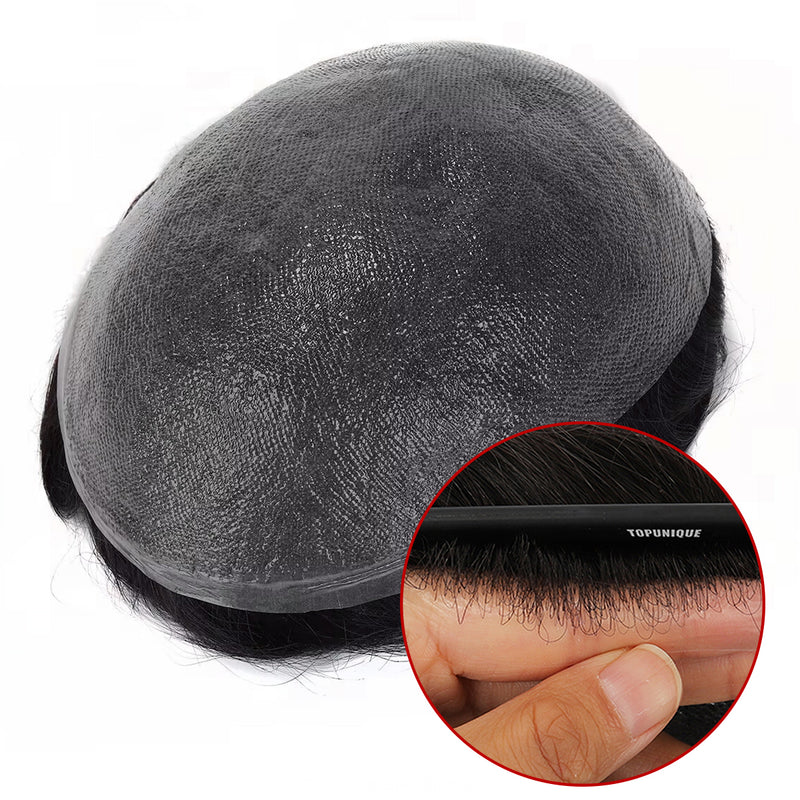
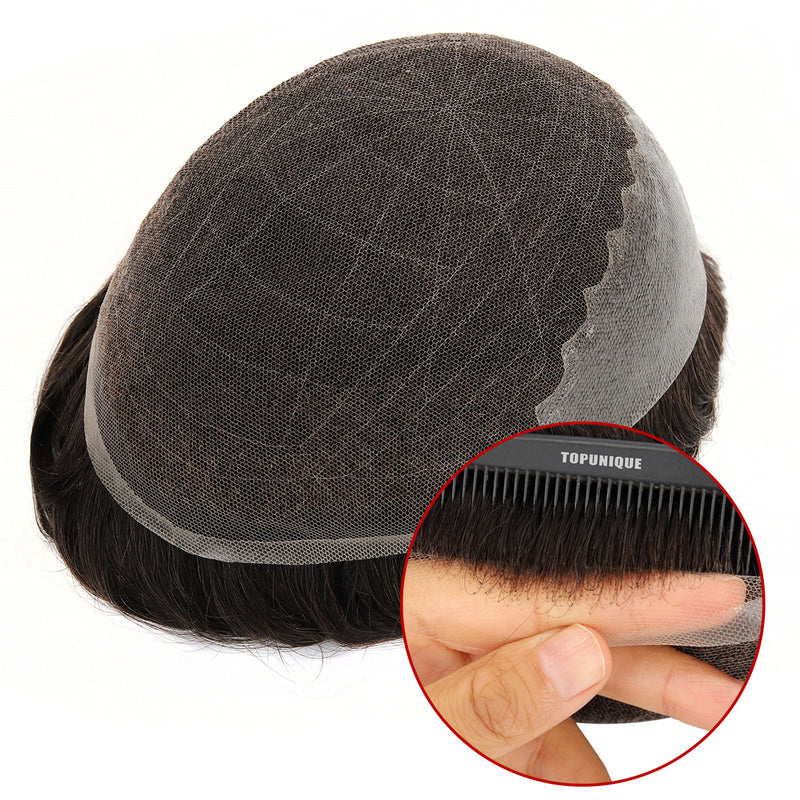
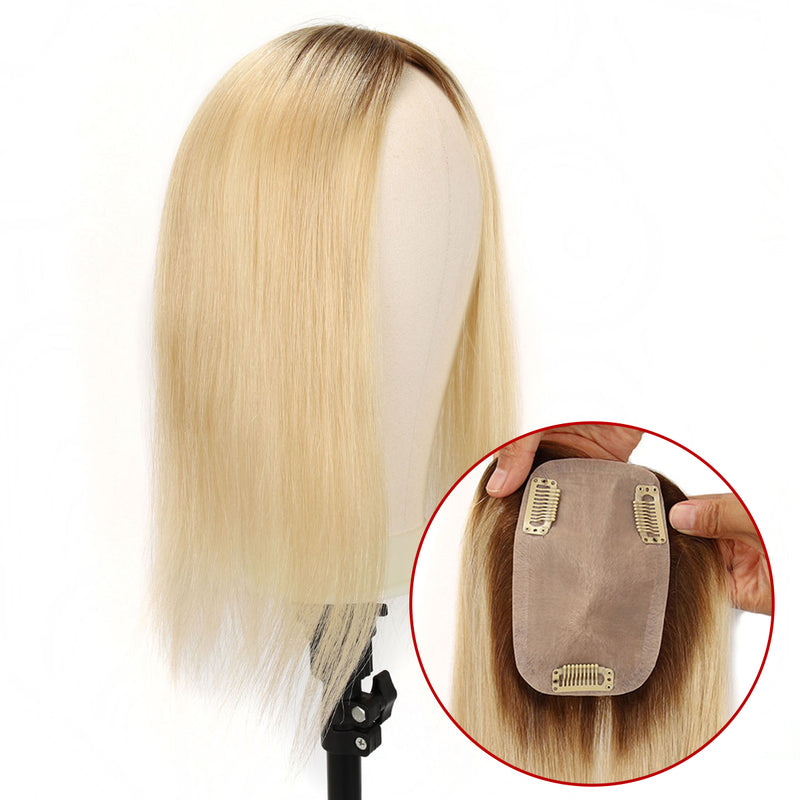
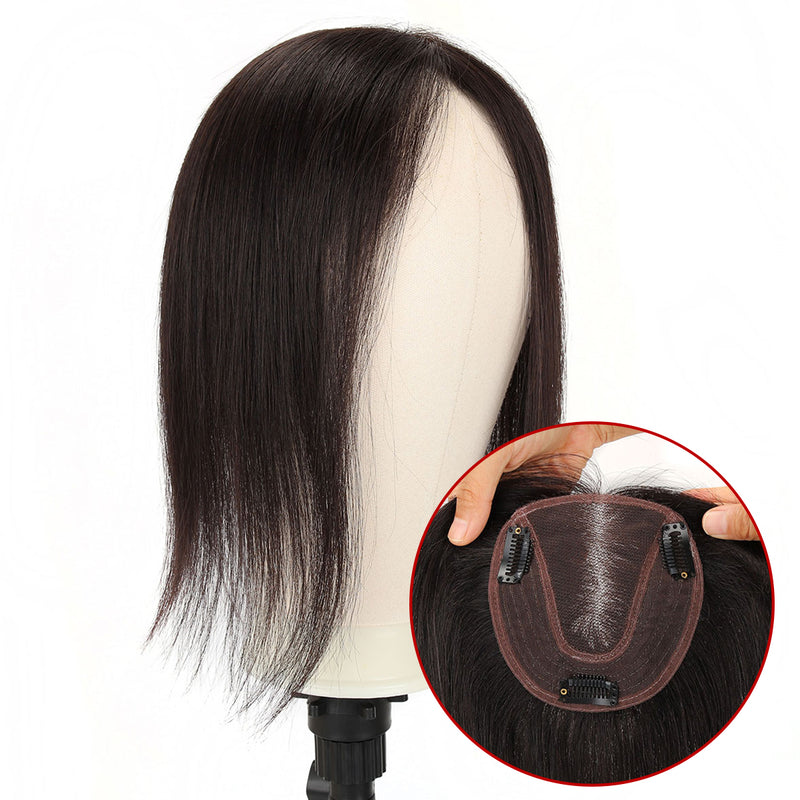


0 comments